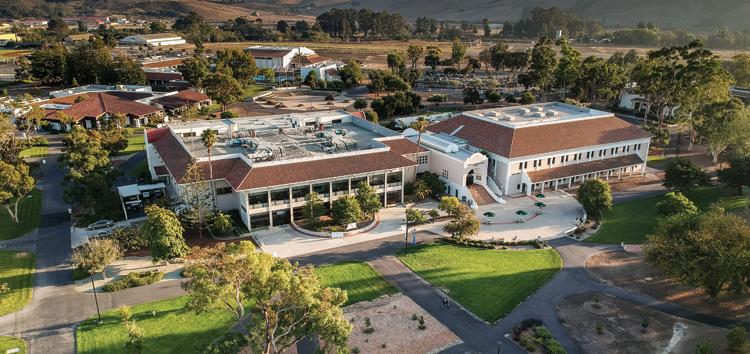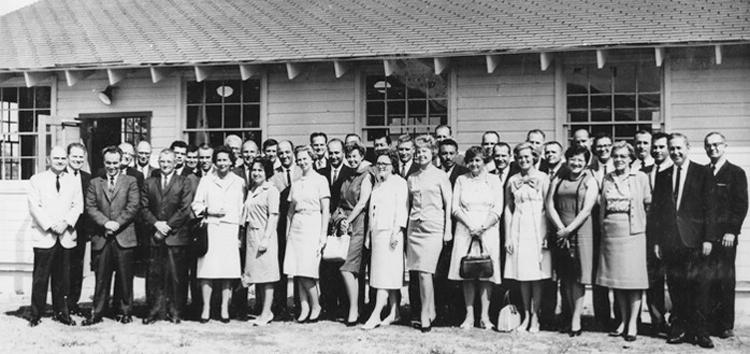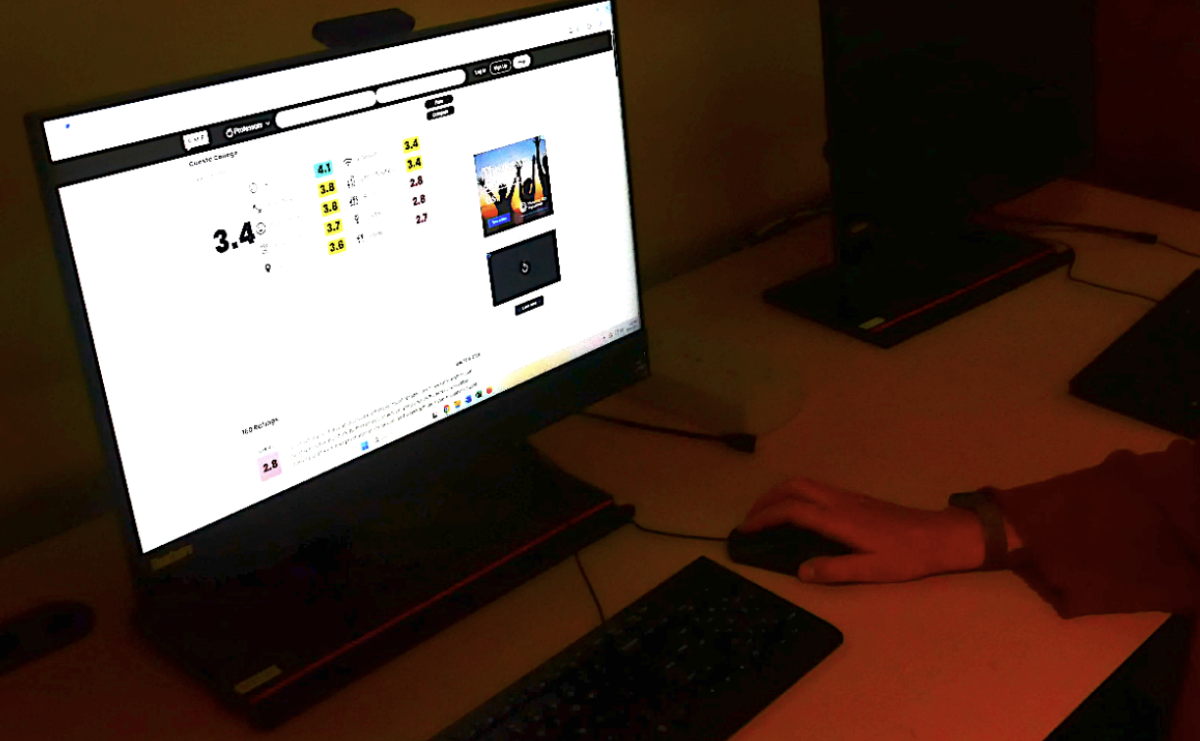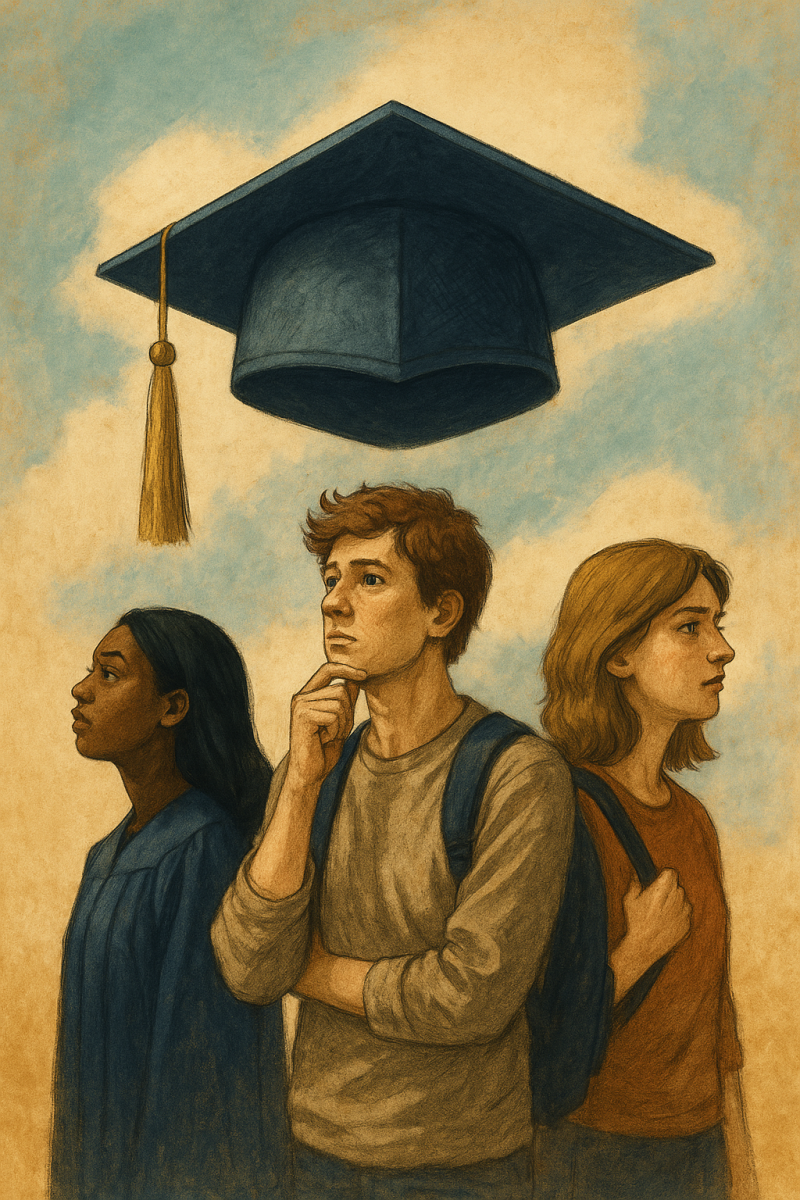Cuesta’s first full time faculty and staff in front of an old barrack’s class room in 1964.
Photos courtesy of Cuesta College Marketing Department
By Amanda Vasquez
Distribution Director/Staff Writer
Cuesta College may have been founded in a basement underneath San Luis Obispo High School in the early 1900s, according to Cuesta College alumni.
Educators first got the idea for Cuesta College in 1916. Back then, going to college was not nearly as common as it is today.
“San Luis Obispo High School was located on Johnson Street near where Smart and Final is now,†said Shon Hand, alumni and long-time San Luis Obispo resident.
“They came up with the idea for Cuesta in a basement, underneath the old San Luis Obispo High School,†Hand said.
They wanted to give students the opportunity to continue education after high school.
Cuesta College was originally founded as a junior college, a school for people to attend after high school. The small junior college was then shut down when the United States entered into World War I in 1917.
In 1936, the San Luis Obispo School District reopened the junior college.
“The classes were held together — high school and junior college in the same room at the same time,†said Frank Martinez, Cuesta’s vice president in the 1960’s and president from 1977 to 1989.
“That went out of existence in 1959,†Martinez said, “when the junior college, as part of the high school district, lost its accreditation.â€
Evening courses were held in a building on the hilltop of Lizzie Street in the 1950’s, above the old junior high school, where it was in operation until 1959.
“A law was passed in 1960,â€said Martinez, “that every high school district had to be part of a junior college district.â€
In 1964, San Luis Obispo High School offered evening classes in temporary quarters of the old beat down barracks on Camp San Luis Conservation Corps.
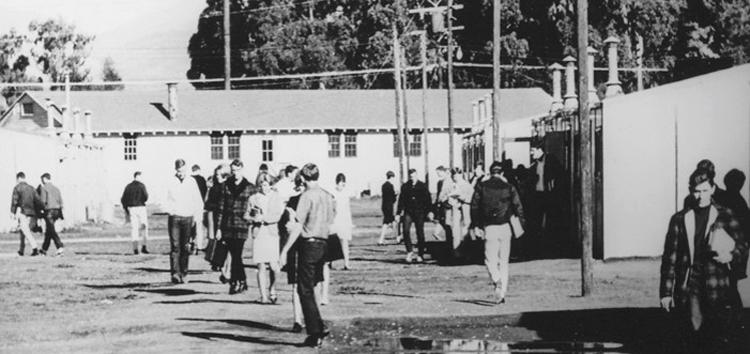
Years later, in the 1960’s, Cuesta changed its title from a junior college to a community college.
Cuesta continued to lease property from Camp San Luis, and then became a full service college in 1965. Classes were offered day and night.
“Campus was different back then,†said Gil Stork, superintendent/president of Cuesta College, who is the longest-serving employee at 50 years. “People dressed in suits and ties.â€
Back in those days, students took a chance on Cuesta, Stork said.
Cuesta was up and coming; instructors and students who got involved where taking a risk on investing their time and energy in Cuesta.
“At the time [Cuesta] was very rustic,†Stork said. “Very pioneering.â€
“It was a very different feel back then, there was such a high degree of spirit,†he said.
“[There was] a lot of emphasis put on creating a family,†Stork said. “There would be faculty meetings held in one room, with all the supervisors present.â€
Stork shared pictures of faculty and students hanging out in the muddy grounds of Camp San Luis wearing suits and dresses, holding books and talking to each other.
They held homecoming dances and football games. There were people holding hands, it looked like they were playing red rover and cheering each other on.
“All the faculty members could fit in one room,†Stork said.
“I really took a chance on leaving my job as a high school teacher of three years,†Stork said. I came with the excitement of doing something different.â€
Now, there are so many departments, it would be impossible to fit everyone in one room.
“Coordinating that would be very difficult and there would not be a large enough room,†Stork said.
When Cuesta started up, 917 of the 1,400 students who graduated from high school attended Cuesta College. Not only that, close to 1,000 students attended night classes.
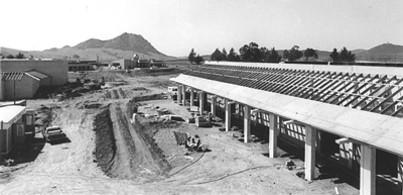
In 1970, many more divisions were built at Cuesta College where the campus lies now.
In 1973, the foundation for Cuesta’s new campus began being built.
According to notes from a presentation written by Stork, “it was challenging for students who had classes on both campuses back-to-back.â€
In the 80’s Cuesta’s progression slowed down, but its curriculum continued to flourish from then on out, into what it is now.
